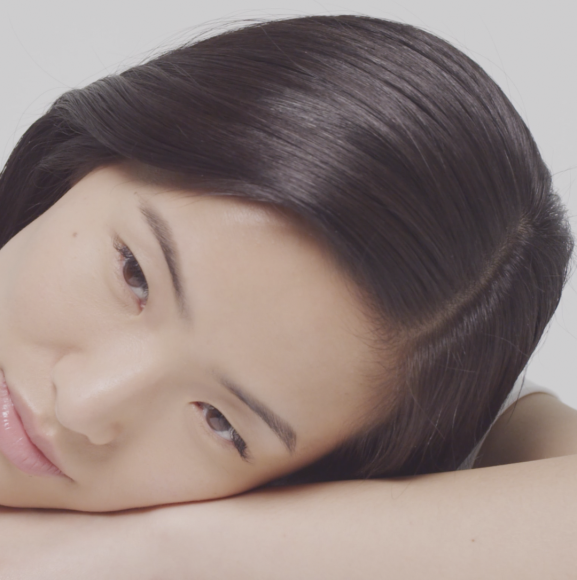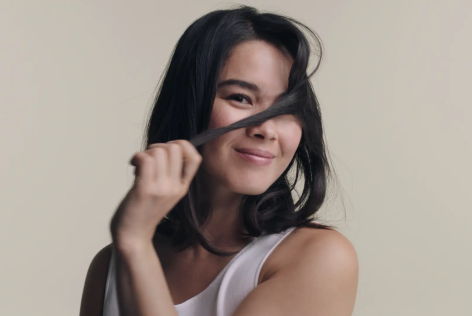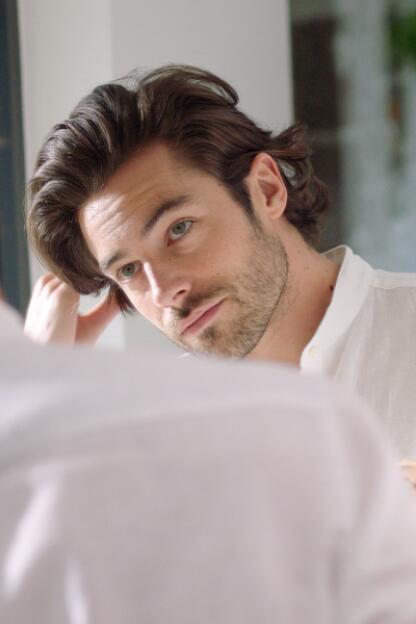The scalp microbiome - what is its relationship with dandruff?
What is the microbiome?
This word comes from the Greek micro meaning " small " and bios meaning " life ".
It is an ecosystem specific to each individual. It is made up of different micro-organisms, which are called microbiota.
In this way, we have a skin microbiome, a gut microbiome (also called the intestinal flora), but also a scalp microbiome.
Today, we hear more and more about the microbiome. When cosmetic brands use this term, they often refer to the skin microbiome.
A healthy microbiota is a balanced microbiota. Its composition is unique and different from one individual to another.
In fact, the microbiota is totally personal. It comes partly from the mother, and also from the father, although it is also affected by our diet and diversifies as we grow older.
Within the same individual, the composition of the microbiome varies greatly depending on the different regions of the human body. Indeed, the dry, oily or moist areas of our skin harbour different micro-organisms in varying quantities.
We live in symbiosis with our skin microbiome
The micro-organisms we harbour, on our skin for example, feed on the compounds (molecules) we secrete. In exchange for the food and shelter we offer them, they carry out certain biological activities.
They stimulate our immune system and strengthen our skin barrier.
They guarantee the harmony of their diversity, thereby protecting us from agents that can cause disease.
They produce compounds for us that are essential for maintaining the skin's pH.
We therefore form a " win-win " relationship with our microbiome.

The composition of the scalp microbiome
The scalp is an oily area rich in micro-organisms and sebaceous glands (located, in large numbers, at the base of the hair follicles).
The scalp microbiome is composed of micro-organisms such as lipophilic bacteria and yeasts (with an affinity for lipids) living within the secretions of the scalp. These main bacteria are called commensal: they live alongside another animal or plant of a different species and take advantage of its " food " without harming it.
On the scalp, these are Cutibacterium Acnes and Staphylococcus Epidermidis. Malassezia yeasts (Restricta and Globosa) and other bacteria in low abundance (Proteobacteria and Actinobacteria) are also present.

What is the role of the microbiome on the scalp?
As scalp specialists, we are convinced, as our founder René Furterer said, that healthy hair grows on a healthy scalp.
We can therefore now explain why. When the microbiome is balanced, the scalp is healthy and the hair is full of life.
Several factors can alter the natural microbiome of the skin: environmental changes, geographical location, use of drugs or harsh cosmetics.
Maintaining a physiologically balanced state of the microbiome is essential for healthy skin. The disruption of this balance between micro-organisms results in the proliferation of certain species to the detriment of others. This can affect the defence functions of the scalp, such as the protective skin barrier, and lead to pathological conditions.
In dandruff conditions, Malassezia yeast takes over from Cutibacterium Acnes bacteria. Rebalancing the microbiome by allowing the " good " bacteria to take over from the " bad " bacteria is therefore the key to getting rid of dandruff in the long term.
"The scalp microbiome: what does it do for my hair? What is its definition? "
Eddy,
36 years old

"Dear Eddy,
Thanks for asking, we were looking forward to talking about the microbiome! What is the microbiome and how can it be defined? It’s an ecosystem, a quasi-microscopic but totally fantastic world. Our scalp is home to small populations of microorganisms, the microbiota. To put it simply, the microbiome is the house and the microbiota are the inhabitants! There are thousands of microbiomes and microbiota, but we are interested in the one on the skin and especially the scalp.
The microbiota is an integral part of the scalp surface. It consists of bacteria, yeast and viruses (nice viruses). This little world lives in peace on our skulls, in harmony and especially in symbiosis. As with any ecosystem, it's all about balance: as long as these populations regulate themselves and grow equally, everything is fine! The diversity of the microbiota helps to stabilize the pH of the scalp and stimulates our immune system. It allows us to maintain a healthy scalp, which plays an important role in hair beauty. Problems arise when the balance is upset. Oh there can be numerous causes, as many internal as external: alteration of the hydrolipidic film, inflammations of the skin barrier, production of sebum, stress, pollution, etc.
The rupture of this fragile balance will prolong and amplify problems with the scalp. It may be responsible for the appearance of dandruff: don't point the finger at the microbiota, it didn't start it! But it is definitely the one who will accentuate the problem by supporting the accumulation of Malassezia, a yeast which feeds off the excess production of sebum and flaking and thus create the conditions for the appearance of more and more dandruff. "

René's advice for rebalancing the scalp microbiome
What can you do to rebalance your microbiome? Be aware that only a clinical examination can reveal the condition of your microbiome. This being said, the microbiota is a true marker of the advancement of problems and pathologies. You will therefore quickly feel the effects of an imbalance: discomfort, itching, dandruff, irritation and loss of hair strength are factors you should look out for.
The idea is to help your scalp restore its natural balance. For this you can turn to ranges specifically designed to address the scalp microbiome. It’s important to choose adapted products because it is not a question of eradicating a whole category of micro-organisms, that would create an even greater imbalance, but rather of putting each one back where it belongs! At René Furterer we have created the Neopur Microbiome Expert range for dandruff: these scalp-friendly, anti-dandruff shampoos specifically target Malassezia yeast to rebalance the microbiome. You can also look at other causes of this imbalance: work on your stress, review the basics of your diet, evaluate the daily pollution you are exposed to, reflect on your hair care routine and delay the most aggressive treatments. You may not hear your microbiota applauding but your scalp will thank you!
NEWSLETTER
Take care of yourself!
Taking care of your hair is also taking care of yourself... Regular updates on real stories, real answers, real advice, and much more right to your mailbox.

Our products designed for you
Additional articles
- Discover How can I fight dandruff when I have long hair?
How can I fight dandruff when I have long hair?
- Discover Oily dandruff or dry dandruff? Get rid of it all!
Oily dandruff or dry dandruff? Get rid of it all!



